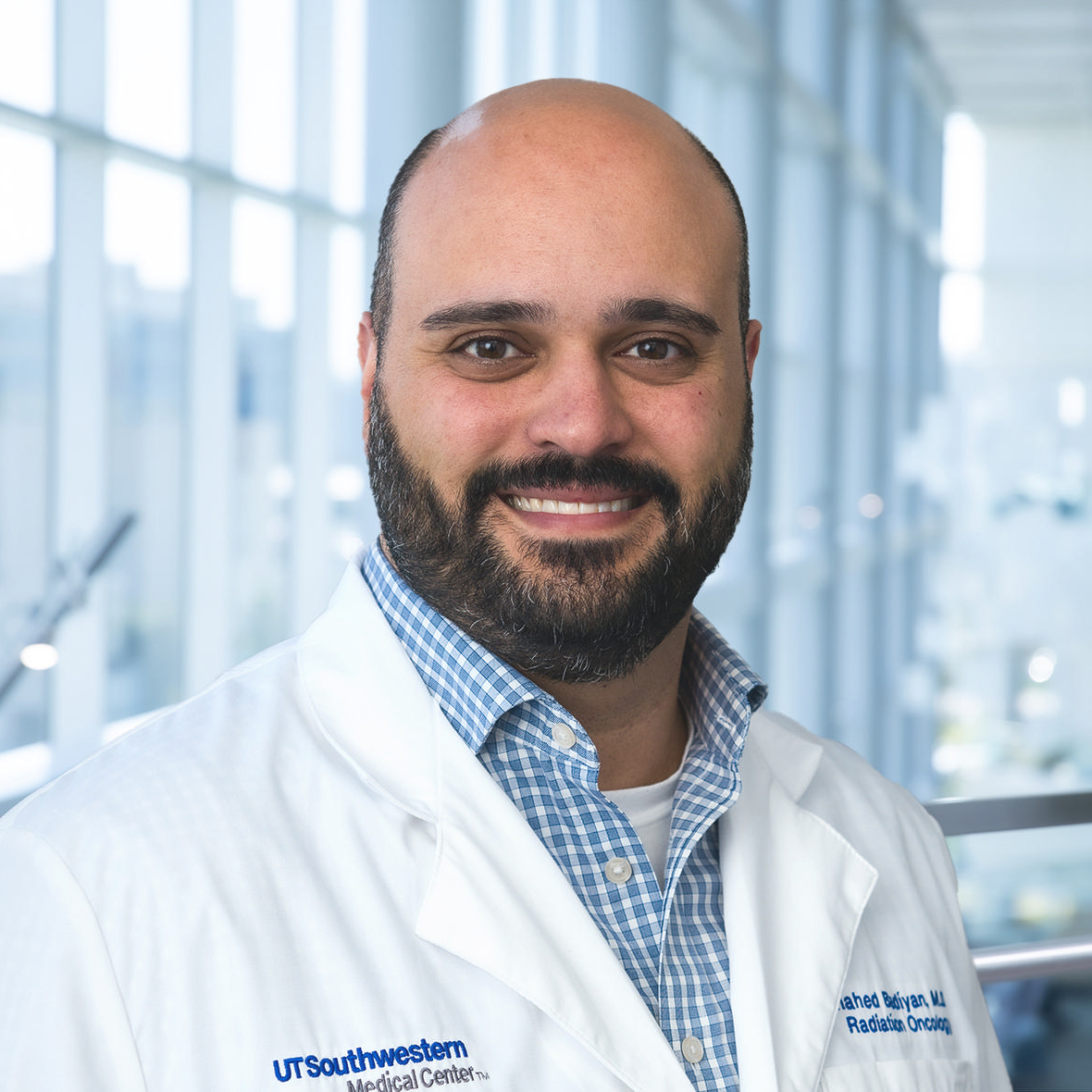

Shahed Badiyan, M.D., Associate Professor of Radiation Oncology, and Mu-Han Lin, Ph.D., Professor of Radiation Oncology, co-lead the Adaptive Radiation Therapy (ART) Program at UT Southwestern Medical Center, one of the largest of its kind in the world. ART is an innovative radiation treatment technology that enables radiation oncologists to modify the radiation plan in real time, offering fully personalized treatments for each patient.

Shahed Badiyan, M.D.
Associate Professor of Radiation Oncology and
Director of Clinical Adaptive Therapy
ART allows for adjustments to account for variations such as patient weight fluctuations, organ movement, and tumor size changes, thereby targeting cancer more precisely while sparing healthy tissue. These real-time adaptations, previously impossible, are now feasible due to advanced imaging software that provides immediate anatomical information.
This development has shifted the treatment paradigm, allowing for plan modifications each time a patient arrives for treatment. Ultimately, this approach aims to minimize side effects for patients while ensuring optimal cancer outcomes.
The Department of Radiation Oncology houses four machines dedicated to ART, including two CT-based Varian Ethos and two MRI-based Elekta Unity systems, totaling over 12,000 treatments since the inception of both machines in 2021.
“The real-time treatment modifications rely on advanced imaging, automated quality checks, and precise dose recalculations to ensure both safety and efficacy,” says Dr. Lin, Director of Adaptive Therapy in Medical Physics. “Our multidisciplinary team continuously refines these workflows to make ART both efficient and accessible to more patients.”
According to Dr. Badiyan, Director of Clinical Adaptive Therapy, ART can benefit the treatment of a variety of cancers. As a gastrointestinal radiation oncologist, he finds it particularly beneficial for treating liver and pancreatic tumors, as the intestines are constantly shifting and are especially sensitive to radiation. By using ART, the intestines can be protected much more effectively, while high radiation doses are delivered to the target area with significantly improved safety compared with previous methods. This approach has revolutionized the Department’s treatment of abdominal cancers.
“For locally advanced lung cancer patients, we utilize ART once a week to shrink the radiation field to account for tumor shrinkage over the course of treatment,” Dr. Badiyan says. “For early-stage lung cancers near critical structures such as the main airways and blood vessels, we use ART with stereotactic techniques to protect these vital sites. In some cases, we may also incorporate PULSAR® into our treatment approach.”

Mu-Han Lin, Ph.D.
Professor of Radiation Oncology and
Director of Adaptive Therapy in Medical Physics
Having the ability to adapt treatments based on daily anatomy variations allows for simulation-omitted treatments, which reduces wait times typically required for separate simulation sessions. Specifically, this approach is beneficial for patients in need of urgent treatment and enables therapy to start sooner.
One of the latest innovations integrated into ART is PULSAR®, or personalized ultra-fractionated stereotactic adaptive radiotherapy, a treatment approach that delivers radiation every few weeks instead of the traditional daily schedule. PULSAR® helps reduce the risk of side effects, especially for those with poor lung function or interstitial lung disease who are at high risk for complications.
“To enhance personalized medicine and assess each patient’s response to every treatment pulse, we have integrated multimodal imaging into adaptive therapy,” Dr. Lin says. “This approach allows physicians to incorporate PET scans, which highlight metabolic activity in tissues or functional imaging during online adaptation, enabling real-time treatment adjustments based on the patient’s response.”
The Department is utilizing clinical trials and data registries to refine ART, aiming to enhance long-term quality of life and treatment efficacy. Dr. Badiyan shares his enthusiasm for the launch of the PRISM clinical trial, a platform designed to explore ART concepts, particularly the principles behind PULSAR®.
“These trials and registries will drive advancements in cancer care,” he says. “Ultimately, we believe our findings will enhance treatment outcomes and improve patients’ quality of life.”
